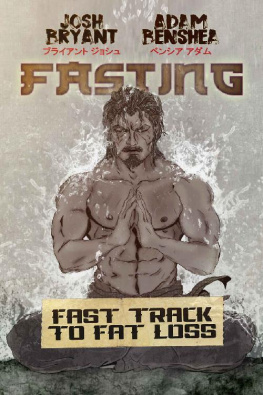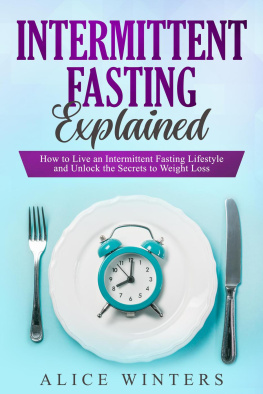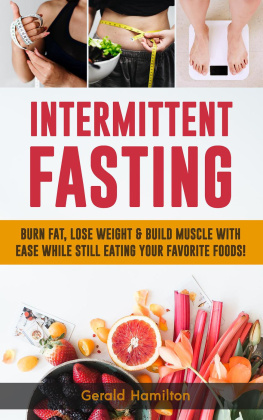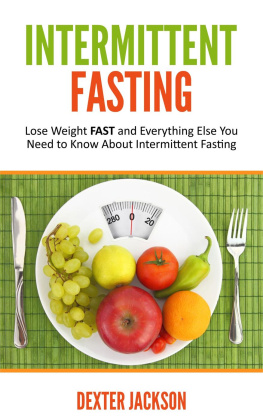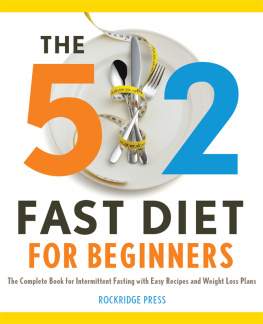All rights reserved, including file sharing and the right to reproduce this work, in whole or any part, in any form. All inquiries must be directed to Josh Bryant and Adam benShea and have approval from both authors.
Introduction
Fasting is the intentional refrainment from consumption for a time period. Most often, a fast is abstaining from food. After a meal is digested and absorbed, the period until the next meal is eaten is known as a fast. So, it could be overnight, over part of a day, or much longer.
Recently, intermittent fasting has received attention on social media apps, between sets at your local iron pit, and in casual conversations around the pool at neighborhood parties. A lot of discussions on the topic appear to be rich with hyperbole, embellishment, and tales of transcendent journeys through metaphysical forests of personal discovery.
To help you navigate your way through this jungle of data, we offer this project as a compass. Use it to locate the key points and then refer to them often, to avoid getting lost in the overwhelming inundation of online information.
Although it is trending hotter than your favorite reality television stars booze binge down in Old Mexico, fasting is nothing new. It has a rich history in health, spiritual, and political movements.
Long praised as the paragon of wisdom, Greek philosophy is filled with examples of legendary thinkers espousing the benefits of fasting.
Well before he achieved acclaim as one of the greatest thinkers of the ancient world, Plato was a talented grappler who competed in the Isthmian Games. In fact, his name, Platon, means broad shouldered, in reference to the boulder-like shoulders he developed through hours of wrestling. His balanced life of rigorous physical training and demanding cerebral activity required a rare degree of awareness. To perform at a high level, Plato said, I fast for greater physical and mental efficiency.
Similarly, the famous Greek historian Plutarch suggested using fasting as a therapeutic treatment.
The father of modern medicine and the namesake of the Hippocratic Oath (requiring a physician to uphold certain ethical standards), Hippocrates prescribed fasting to treat a wide range of ailments from cardiovascular disease to diabetes.
While there are those who suspect or presume that scientific medical claims and religious ideas are categorically opposed to one another, the two fields are in agreement on this topic and emphatic in their call for the benefits associated with fasting.
Religion is overflowing with examples of prophetic figures and disciplined ascetics who practiced, and called for, fasting as a means to purify oneself and draw closer to God.
In Judaism, fasting has been, and continues to be practiced as, part of religious rituals and holidays. There are many fast days in Judaism; the best known is Yom Kippur, or the Day of Atonement. Curiously, fasting on Yom Kippur includes not just abstaining from food, but also refraining from drink, bathing, and sexual relations.
Fasting serves as a means to achieve a form of purification for greater spiritual insight. It also allows the religious believer to draw closer to the prophet, because fasting is a recurrent theme across the prophetic experience.
In the Bible, Moses fasts for 40 days before receiving the commandments from God at Mt. Sinai. Similarly, during his temptation in the desert, Jesus fasted for 40 days.
Early Christian ascetics practiced fasting as a means to draw closer to Jesus. The concept of imitatio Christi , or the imitation of Christ, has been an ideal within Christianity since the first century. Many devoted followers of Jesus and his teachings used various forms of renunciation of worldly desires and pursuits as a means to mimic the martyrdom of Jesus. In a manner similar to Jesus turning away from the world by giving up his material body, the believer who emulates Jesus looks beyond the finite realm and toward the infinite by abandoning the trappings of the profane, or secular, realm.
The practice of fasting is one of the more prominent and demonstrable ways of imitating Jesus. The ultimate aim of Christian believers who practice worldly renunciation is to draw closer to Jesuss sacredness and, in the process, be blessed by their sheer proximity to his being. From this perspective, fasting allows one to become more holy.
In Islam, the prophet Muhammad was a strong advocate for fasting, and the central text, the Quran, states: To fast is best for you, if only you knew. From the seventh century to present day, Muslims worldwide fast from sunrise to sunset during the holy month of Ramadan. Many Muslims fast regularly on both Monday and Thursday. Moreover, in the collection of sayings of Muhammad, it is recorded that a believer should fast three times monthly.
Of course, fasting is also prevalent in Buddhism. Siddhartha Gautamas experience with fasting was a crucial part of his journey toward attaining enlightenment and reaching his status as the Buddha (the Awakened One). Early on in his spiritual development, Gautama practiced a type of strict fasting that allowed for only one kernel of rice a day. This practice resulted in the Buddha becoming so emaciated that his bones showed through his skin. With time, the Buddha broke from this type of extreme fasting and focused on a more balanced meditative focus. Eventually, the Buddha taught a middle path between sensual overindulgence and severe asceticism.
Therein is an important lesson: Prolonging the act of purposeful food denial may hinder spiritual progress, but the ability to fast for a limited duration was, and remains, an important step on the journey to spiritual awakening.
Still today, monastic followers of Buddhism have their last meal before noon and will then fast until the following morning. In Theravada Buddhism (which is considered to be the oldest existing school of Buddhism), fasting falls under a type of ascetic practice known as dhutanga , or shaking up. Fasting, then, can be thought of as a type of spiritual invigoration, like a metaphysical cold shower, leaving you acute, awake, and aware. Popular with Thai forest monks, the idea is that various forms of fasting provide a means to cultivate deeper spiritual practices and detachment from material goods.
Much like what you see in Buddhism and Christian ascetic practices, fasting in Hinduism represents the denial of physical needs for the purpose of acquiring spiritual gains. According to Hindu scriptures, fasting allows one to become closer to the Absolute through the process of creating a more balanced relationship between body and soul. There is a belief in Hinduism that food consumption equates to the gratification of the senses, while fasting elevates the senses to a place of contemplation.
Depending on their adherence to a particular deity inside of the broad spectrum of worship that falls under the umbrella term of Hinduism, adherents may fast at different times during the week or month and during a wide array of festivals (with the nine-day holiday of Navaratri being one of the more popular examples).
A popular, and very ancient, Indian medical system known as Ayurveda is seen by some as related to the cultural tradition of Hinduism. The Ayurvedic view of health is based on the belief that many diseases are caused by the buildup of toxic materials in the digestive system. To keep a person healthy, it is necessary to have a regular cleansing of toxic materials. Fasting gives the digestive organs a rest, and the body, as a whole, is cleansed, and maybe even corrected. During this Ayurvedic fast for health, lemon juice is allowed as a means to keep things flowing.

